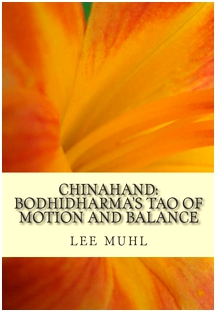In Chinahand Lee Muhl introduces his ideas about the cosmic commodities of time, space, and motion, as they relate to life, and martial arts and Zen – or “Martial Zen,” as he calls them. The book includes historical background of the martial arts in China, Okinawa, and Japan – and the author’s firsthand experience with the early history of Japanese and Chinese martial arts in Los Angeles in the 1960s, at the time the mecca of martial artists in the United States. Of particular interest is Muhl’s account of his historic trip to Japan in the late Sixties as part of the first American “black belt team” to “tour Japanese colleges and combat the best of the young Japanese warriors.” Among the formidable Japanese fighters that Muhl faced off against was a “ferocious competitor named Ono” from the Karate Club of Tokyo’s prestigious Waseda University. Ono had “been the Japanese champion the year before, . . . broken an opponent’s leg with a block, and … could bring the heel of his foot right down on the top of your head.”
The author of Chinahand speaks with incontestable authority. One of the most skilled and toughest martial artists to emerge in the United States the 1960s and 70s, he holds a fifth-degree black belt in the Shotokan style of karate, the highest degree awarded by Chief Instructor Tsutomu Ohshima, a direct student of Shotokan founder Gichin Funakoshi. Muhl is also a talented writer who holds the reader’s attention with a humorously quirky and original style, interspersing his prose with philosophical gems such as this one: “Stability in physical systems is found, not in repose, but in motion. You stop your bike, it falls over. And so it is with life.”
Lee Muhl clearly states that “Chinahand is simple, but not easy” because knowing how to do it does not necessarily mean that you can do it. Mastering Chinahand, rather, takes years of sweat and hard work – not to mention lots of bumps and bruises and probably not a little bit of blood and pain. This book, then, is a “short primer,” the author says, for “finding an extremely high level of physical balance, a few easy steps to making powerful complex motions,” and some other things integral to “Martial Zen” that may be gleaned directly from the pages of Chinhand.

